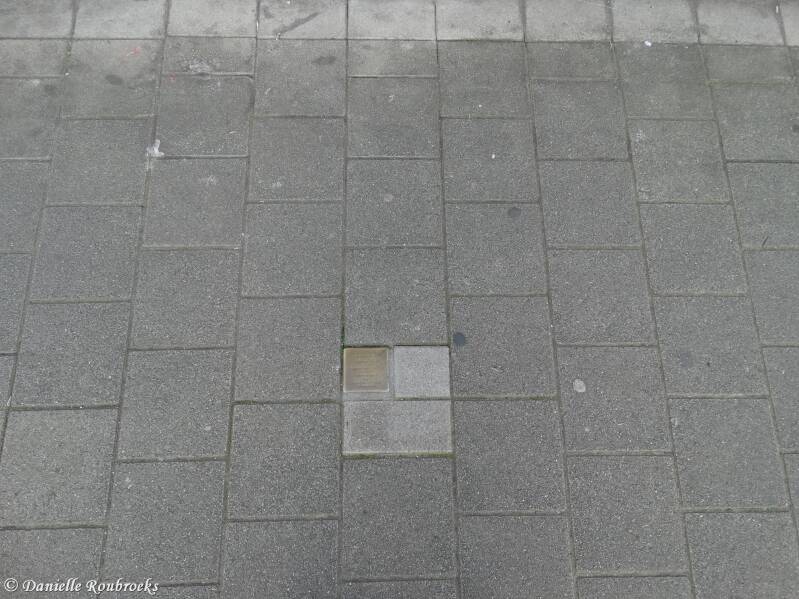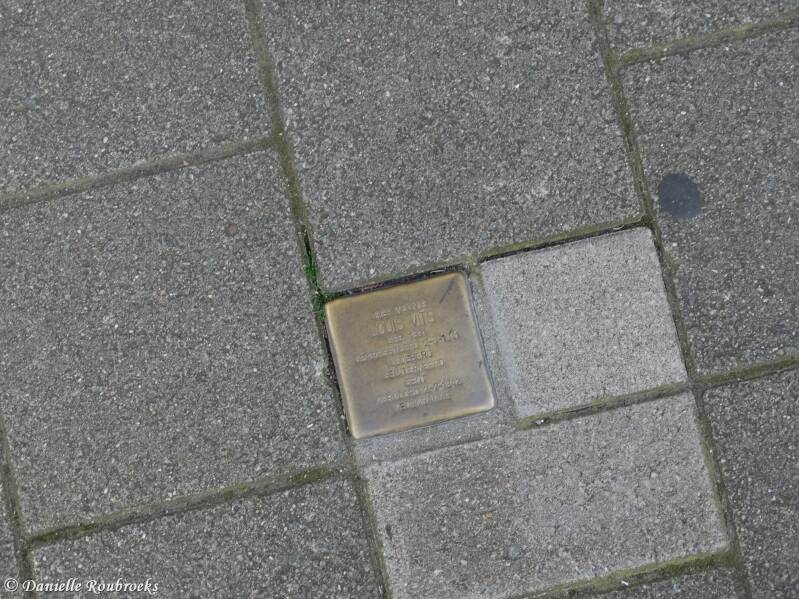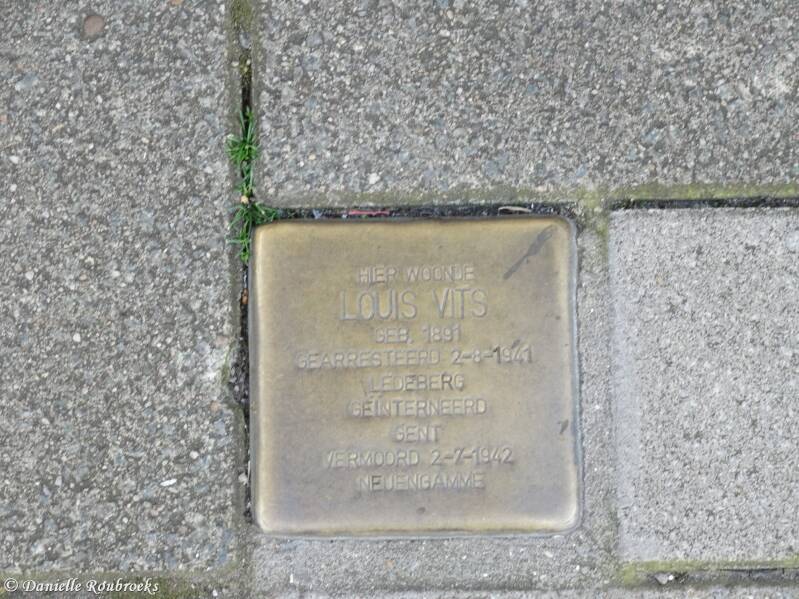Ledeberg - Stolpersteine
Information: Wikipedia
A Stolperstein literally "stumbling stone", metaphorically a "stumbling block" is a sett-size, 10 by 10 centimetres (3.9 in × 3.9 in) concrete cube bearing a brass plate inscribed with the name and life dates of victims of Nazi extermination or persecution.
The Stolpersteine project, initiated by the German artist Gunter Demnig in 1992, aims to commemorate individuals at exactly the last place of residency—or, sometimes, work—which was freely chosen by the person before he or she fell victim to Nazi terror, euthanasia, eugenics, was deported to a concentration or extermination camp, or escaped persecution by emigration or suicide. As of 29 March 2018, over 67,000 Stolpersteine have been laid in 22 countries, making the Stolpersteine project the world's largest decentralized memorial.
The majority of Stolpersteine commemorate Jewish victims of the Holocaust. Others have been placed for Sinti and Romani people (then also called "gypsies"), homosexuals, the physically or mentally disabled, Jehovah's Witnesses, black people, members of the Communist Party, the Social Democratic Party, and the anti-Nazi Resistance, the Christian opposition (both Protestants and Catholics), and Freemasons, along with International Brigade soldiers in the Spanish Civil War, military deserters, conscientious objectors, escape helpers, capitulators, "habitual criminals", looters, and others charged with treason, military disobedience, or undermining the Nazi military, as well as Allied soldiers.
List of Stolpersteine in the city of Ledeberg
Jacques Eggermontstraat 59: LOUIS VITS
Jacques Eggermontstraat 59
hier woonde
LOUIS VITS
geb. 1891
gearresteerd 2-8-1941
Ledeberg
geïnterneerd
Gent
vermoord 2-7-1942
Neuengamme
Jacques Eggermontstraat 59
here lived
LOUIS VITS
born 1891
arrested 2-8-1941
Ledeberg
interned
Gent
murdered 2-7-1942
Neuengamme
Like his father and grandfather, Louis Vits was a shale decker in Ledeberg. In 1914 he volunteered for the trenches on the Yser. He married in 1919 but remained in the Belgian army until 1921, in a unit that occupied a part of Germany. When the war broke out in 1940, he was almost 49 years old. Vits remained committed to the fatherland, and especially to the Belgian population. He joined the Civil Protection Service against Air Raid, an organization that took care of the air raid shelters, determined who had to go to which basement during bombing raids and escorted people there. In the meantime, however, Louis had also secretly joined the resistance. His duties as a block responsible gave him the opportunity to walk around everywhere, and therefore also to spy.
At the end of July 1941 Vits went too far in his open anti-Germanism. At a demonstration of the Ledeberg population against the severe famine, he handed out pieces of the Belgian flag. He then got into a serious discussion with a member of the Black Brigade, the organization of Nazi militants within the Vlaamsch Nationaal Verbond (VNV). The next day the Germans arrived at his house. Vits stayed in the Nieuwewandel until August 20, 1941 and then moved to Fort Breendonk. Less than a year after his arrest, sick and ill-treated, he finally died on July 2, 1942 in Neuengamme, the concentration camp for political prisoners near Hamburg.






